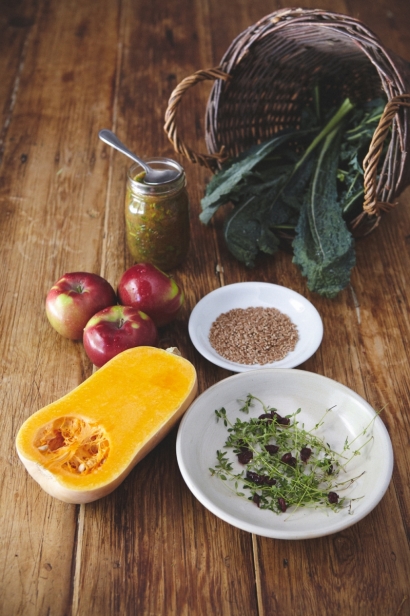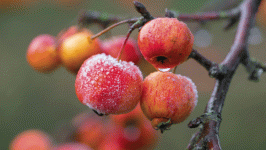Capital Superfoods
Do you ever fear your food? Suspect that there may be invisible foes like pesticides, genetically modified ingredients (GMOs) or chemicals lurking under its innocent-looking surface? Do you occasionally think of your fridge as a locked medicine cabinet to which you have almost (but not quite) deciphered the secret code?
You must be an American circa 2017. Here, food is no longer merely food. It’s superfood, or Frankenfood. It’s Batman vs. the Joker, and the only one guaranteed to lose is the consumer.
The concept of superfood in particular is pervasive in the way companies market their wares to consumers and in the media’s approach to talking about food and wellness. We all want to be healthy, we all want to take a sensible approach incorporating the most up-to-date research into our diet. The marketing departments at food companies know this, and so do journalists.
“The prevalence of so-called superfoods is a reflection of the tension between our desire to be healthy, our trust in science and actual facts,” Julia M. Hormes, PhD, a licensed psychologist and assistant professor at the Department of Psychology at University at Albany. “What is considered to be a superfood is constantly changing. Oat bran was one of the original superfoods.”
Dr. Hormes assigns the book Consumed, Why Americans Hate, Love and Fear Food, by Michelle Stacey, to her students in the undergraduate seminar Perspectives on Food: Calories, Cuisine, Commercialization. The book uses the rise and fall of oat bran as a case study on scientists and the media hype machine. “The story of oat bran is the story of food marketing at the height of its powers: Consumer interest is piqued by several scientific studies and a popular self-help book. … Something that is a small, limited element of a healthy diet becomes a superstar.”
For a brief time, food manufacturers changed their recipes so they could tout the miracle ingredient on their labels, and books and articles featuring the benefits of the wonder-substance proliferated. However, after a study from Harvard cast doubt on the connection between oat bran and lowered cholesterol, sales of oat bran plummeted by 50% in just five months and launched 1,000 scathing reports.
Replace oat bran with coconut water, pomegranate juice, acai or goji berries in those sentences and a familiar, contemporary tall tale emerges.
So how do we, as eaters who want to get the most delicious bang for our nutritional buck, make intelligent choices?
First, Dr. Hormes advises, back up and look at the big picture. “Our tendency to fall for superfood ‘fads’ can be traced to three main sources,” she explains. “The first is that we are a land of immigrants. There is a huge mixture of food cultures, which is wonderful in most ways, but whereas other countries tend to look at what Grandma and Grandpa ate and follow suit, we tend to hop from one dietary trend to the next. The second is that we are surrounded by a huge abundance of cheap food, and companies need to grab our attention, which is often done by pointing out the presence of the latest superfood in their product. The third element is the obsession we have with quick fixes for diet and health.”
Eat less, move more isn’t as sexy as the notion that a sugary, fat-laden “energy” bar sprinkled with an exotic berry flown from a jungle far, far away will impart magical cholesterol-busting, waist-cinching, cancer-fighting powers.
Bottom line, we should all be listening to what Grandma’s been saying all along. “Our forefathers didn’t grow up eating acai berries and popping omega-3 capsules,” Dr. Hormes says. “They were better at reading their internal signals, and they ate locally and seasonally. You can consume everything, but do it in moderation. Instead of reaching for an exotic fruit from far away in December that probably lost a lot of its nutritional power in transit, eat something grown locally. Eating whole foods is a much better way of getting vitamins and minerals than trying to get sustenance from capsules or a lot of processed foods.”
So what would Grandma and Grandpa eat in the grip of winter in the Capital District? Edible asked a nutritionist, Heidi Kessler, MS, SNS (master of science in nutrition, school nutrition specialist) and manager of the Cornell Center for Behavioral Economics in Child Nutrition Programs.
If a Dr. Hormes– and Dr. Kessler–approved definition of superfood as “big nutrition in little packages” suits you, then finding options at the farmers’ market, even in the dead of winter, is possible.
Dr. Kessler’s Capital Superfoods:
Apples: New York grows more apples than any other state, and they truly are a backyard superfood. For a mere 80 calories, an apple provides a hefty dose of fiber to help keep your digestive system running smoothly. Apples contain pectin, which helps feed good gut bacteria and antioxidants that take down free radicals.
Berries: A premium summertime treat. Cherries, raspberries, blueberries and strawberries are abundant on New York farms and gardens throughout the summer. They top the scales in terms of antioxidants, fiber and vitamin C. The local varieties are super flavorful and juicy. Blueberries are a low-sugar, high-fiber snack perfect for those watching their sugar intake. Frozen berries are great in the winter.
Greens: Spinach, chard, kale and romaine are plentiful green superfoods. Eating foods while they are fresh and plump means more nutrition for you. Some vegetables are picked weeks before they show up at the grocery store and during that time, vital nutrients can degrade. The USDA recommends we eat at least one and a half (women) to two (men) cups of dark green vegetables a week. Greens are a powerhouse of nutrition and contain vitamin K, which may help prevent diabetes and inflammatory diseases. Vitamin K is a fat-soluble vitamin, so eating your greens with a delicious olive oil dressing will up your nutritional ante.
Beets: I think of beets as the two-in-one vegetable. You can eat the bulbous root, and the greens! Nutrient-rich beets (which come in gold and striped in addition to the typical red) provide great energy, fight off disease and taste great.
Winter Squash: Butternut, buttercup, pumpkins and acorn are just some of the varieties of winter squash to include in your superfood repertoire. They’re packed with vitamin A to help keep your skin, bones and eyes strong.







